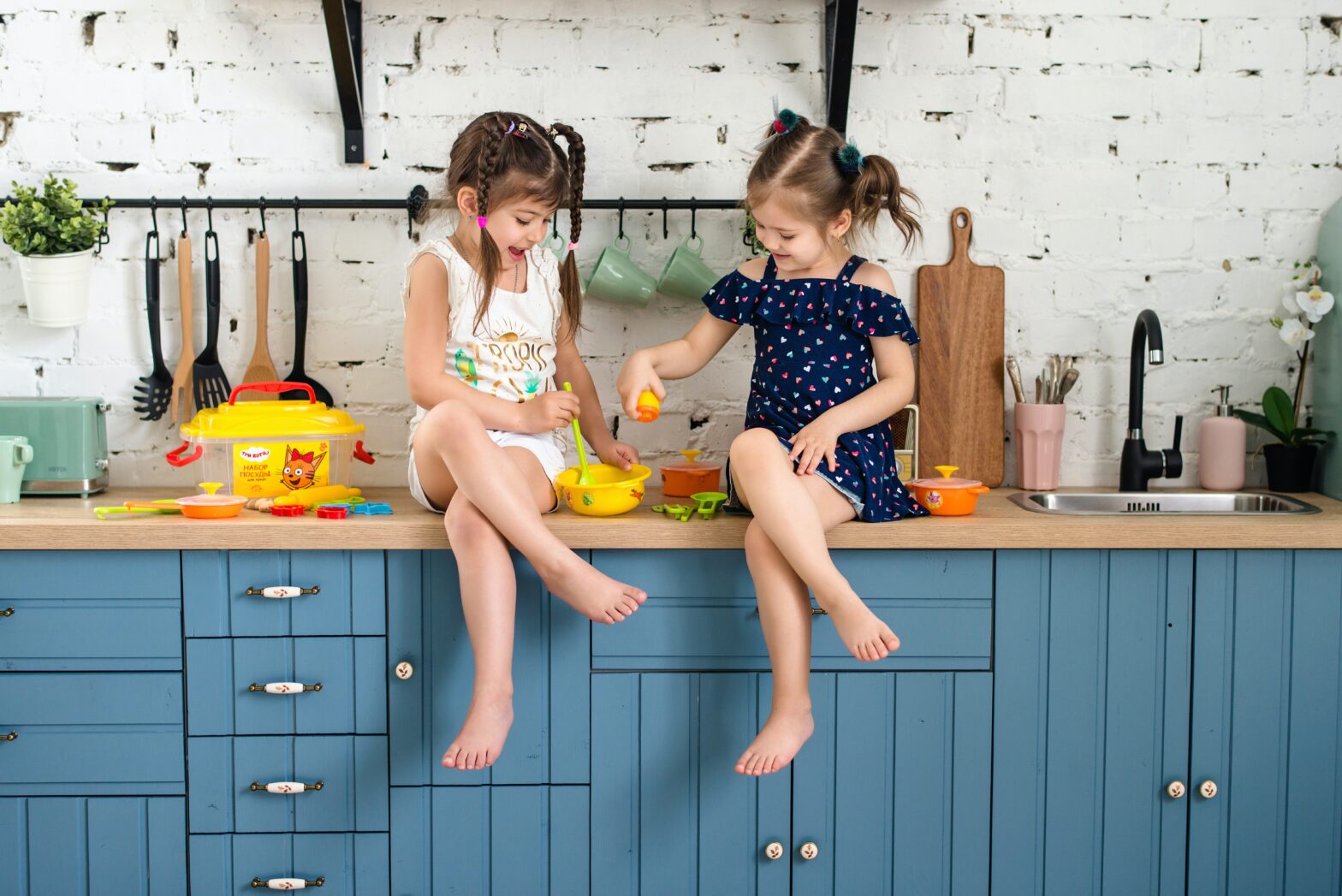We’re shuddering at the thought of little Harry climbing on your just-finished kitchen island and stealing a sharp butcher knife. Nobody wants that to happen. You also don’t want your baby to stuff their arm down a running blender while you’re distracted.
So what can you do? How do you make your kitchen renovation as child-friendly as possible? Let’s look at five ways to make your kitchen a haven of safety instead of danger.
5 Tips for Making Your Kitchen Renovation Child-friendly
If you’re renovating your kitchen and have a curious toddler who likes to poke their nose or hands in everything, here are some tips to make your life easier:
1. Keep Sharp Things Out of Reach
Instead of installing a handy knife block near the stove, put a magnetic wall rack on the kitchen backsplash. Make sure it’s high enough that your toddler won’t be able to reach it even if they’re standing straight.
For other sharp things like mandolins, choppers, or cheese graters, set aside a shelf in your pantry, a drawer, or a cabinet in your kitchen. If you’re going for a drawer or cabinet, secure it with a child lock. That way, your child won’t be able to open it, no matter how hard they try.
You can also divert your child’s curiosity for sharp things by giving them a sharp-(but-really-dull)-things drawer. It could contain plastic utensils, bowls, and cutlery.
2. Choose Easy-to-Clean Materials
Nothing is mess-proof when you’re living with little kids, especially toddlers. So, instead of installing easily stainable stone or steel surfaces, go for less permeable quartz countertops. They’re nonporous, stain-, scratch-, heat-resistant, and extremely low-maintenance. You could also try laminate counters if you’re looking for a budget-friendly option.
Aside from your countertops, make your cabinet doors mess-proof too. You can do that by getting flat slab doors without any intricate designs and a high-gloss finish. Crumbs, juices, and gravy will slide off these surfaces without leaving a stain.
However, scratches will start to show on the glossy sheen over time, which can look terrible. So, consider foil-finished or lacquered doors or semi-gloss. They’ll last longer. You can also ask a kitchen remodeling contractor in New York City to recommend other surfaces.
3. Choose Child-friendly Appliances
When choosing appliances, make sure they can’t be opened by children, especially if they get hot. For example, if you’re getting an under-counter oven, ensure it has a triple-glazed door so your little snoop doesn’t burn their hands off.
Place your oven and countertop near each other. That’ll stop you from tripping over your adventurous little one while carrying a freshly-baked casserole. Also, position electrical sockets near where they’re needed, ensuring no fingers get poked into them.
Consider getting an induction stove instead of a gas stove. Induction stoves generate zero heat unless you’ve placed a pot on them. Plus, they don’t get hot. So, if your child does try to stick their finger on the cool-looking blue lines of the stove, they won’t burn their fingers.
4. Install Hidden Storage
If your kitchen doors and drawers are studded with handles, your child will inevitably try to open them because they’ll see you doing it. So, instead of installing easy-to-see cabinets and drawers, consider hidden storage, especially for knives, sharp cutlery, and machines with blades.
For instance, you could install semi-gloss flat slab doors around your oven. They might look like paneling but will, in reality, be a big place to store everything potentially hazardous to your child.
5. Give Your Child Room to Play
If you’re spending a lot of time somewhere, your child will inevitably find you there, and if you keep pushing them out, they’ll only get more curious. That’ll increase the likelihood of them snooping in the kitchen without your supervision, which isn’t the safest of activities.
So, instead of banning your children from the kitchen until they grow more than two feet tall, include them in your kitchen hustle. Ask them to stir the flour while you sift it, beat eggs while you pour some oil in a pan, or hold a spoon steady while you pour an extract. This way, your child will feel included and stop poking around your kitchen.
You could also include a small seating area in your kitchen. For instance, add a breakfast nook or bar stools on the other side of your countertop. These will welcome your children into the kitchen and give them a place to do homework or help in food prep without getting in your way.
The Bottom Line
Children are curious. They like to know where you are, what you’re doing, and why you’re using certain things. They also like to copy you. But the copying-mommy game can fire backward in the kitchen. Knives are no joke.
Fortunately, there are many ways you can make your kitchen child-friendly, but the best is including your child in all your chopping, grounding, frying, and cooking activities. That way, they’ll become less curious, and your kitchen will become ordinary instead of a novelty.

